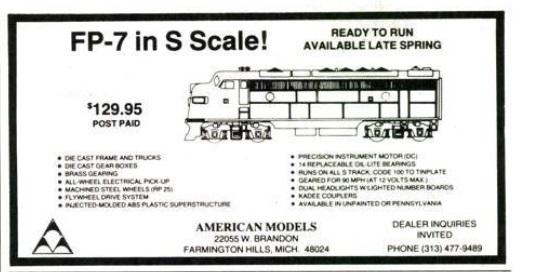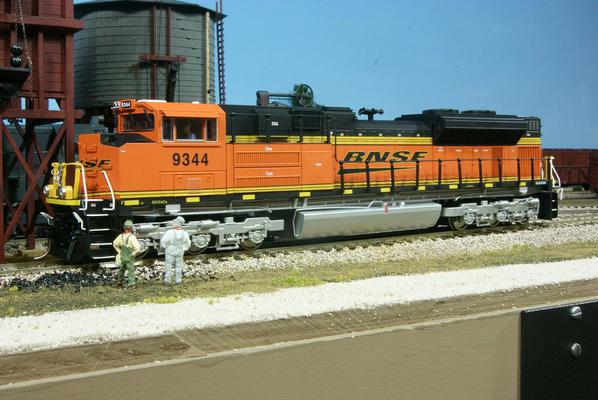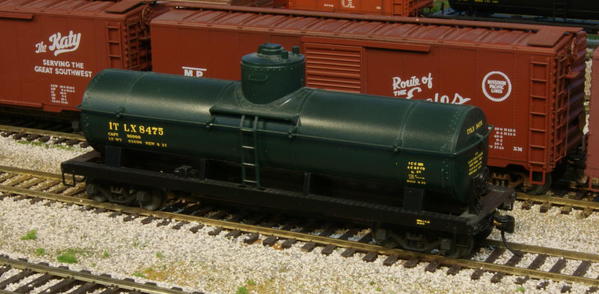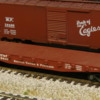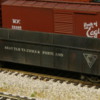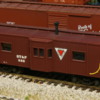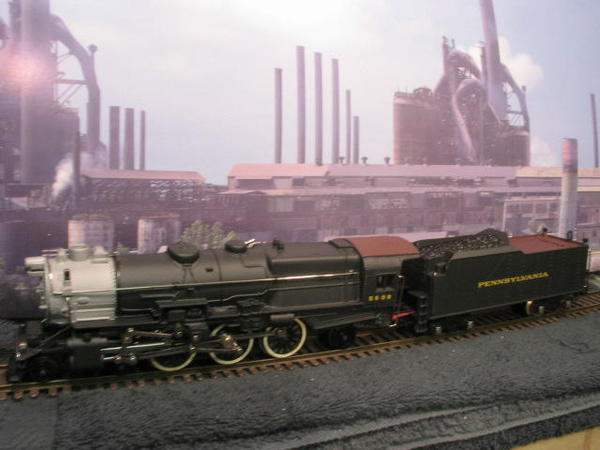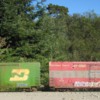Originally Posted by Roundhouse Bill:
Tom: Yes, definitions matter. To me a Hi-Railer is anyone who's trackage is like Gilbert's and who's rolling stock and engines have non scale wheels. I use Gilbert track, original Gilbert locomotives and cars, Flyonel from 81 to current, some American Models AC, Legacy and no SHS or DC engines. By my definition I am Hi-Rail.
Bill,
From American Models website:
What is the difference between hi-rail and scale?
90% of our orders are for HR (hi-rail). This is compatible with AF (American Flyer), and will run on AF track or our track.
Scale
An attempt to model as realistic as possible, usually operated with dc current power supply and has wheel flanges made the smallest possible, but large enough to stay on the track, usually operated on .100 .125 " or .148" high rail track. Couplers are prototype size or close to it, usually "Kadee" couplers or our scale Snap-lock couplers are used.
Tinplate
Usually meant to be American Flyer type railroading with the large flanged wheels and couplers. AC transformers always used. Track is the American Flyer "hollow steel rail" .220" in height, (WWII design).
Hi-rail
An attempt to use the best of both worlds, using the larger hi-rail flanged wheels and American Flyer or sometimes scale type couplers with more realistic track.
AC power has some advantage in that an economical electronic sound system can be made without a battery back-up. (DC sound systems usually cost twice and much). A disadvantage is that AC powered locomotives cannot change directions simply by throwing a switch, and features such as "momentum throttles are not available. A three position reverse unit must be used and requires the power to be turned on and off and on and off again to reverse direction. We often call these AC Flyer.
Traditional Flyer track is a far cry from Hi-rail. I believe this is where the scale guys confuse Flyer and Hi-rail and I also think is what causes so much confusion on the part of the newcomer. Newcomer??? Hey I’m confused on how a traditional Flyer layout suddenly becomes Hi-rail just with the introduction of some new equipment?
Brooks Stover is Hi-rail, so is Carl Tuveson and the picture recently posted by richabr are Hi-rail as well. Flyer track and switches are just that…Flyer. That is not meant to be a judgement call, Flyer is great, but it is not Hi-rail nor is it scale. TrainRMe appears to be traditional Flyer with the exception of the Gargraves trackage.
Bill, if your layout is Hi-rail, then what is a Flyer layout?
Tom Stoltz
in Maine




